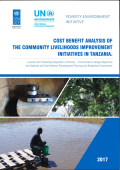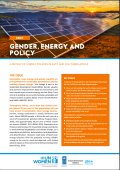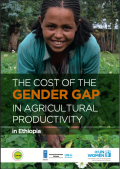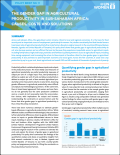
The report presents findings of the economic analysis for the Pro-poor Economic Growth and Environmentally Sustainable Development Project, which is a joint venture between the Government of the United Republic of Tanzania and the United Nations Development Programme (UNDP), and the United Nations Environment Programme (UNEP).

This review of 15 energy policies in East and Southern Africa shows that over half (60 percent) have integrated gender. This brief follows up on the recommendation made by the working paper by conducting an initial review of gender integration in energy policies in East and Southern Africa. To this end, it reports on the results of an analysis of national energy policies and strategies in the region.

This paper provides macro and microeconomic evidence, based on empirical research, of the huge benefits of investing in sustainable environment and natural resource management and sustainable agriculture in terms of economic gains, poverty reduction, food security, and gender equality. The paper also demonstrates the economic, social, and welfare costs of not investing in socially inclusive and economically desirable sustainable practices. It reviews the gaps between existing policies, public investments and implementation and the implications for achieving national, regional and global development goals.

This Report helps to lay the groundwork for deeper investigation as to where to invest for the most cost-effective policies. Our analysis finds that women’s lesser capacity to purchase pesticides, herbicides, and fungicides is an important constraint contributing to the gender gap in farm crop productivity in Ethiopia.

This policy brief shows that gender gaps in agricultural productivity do not arise because women are less efficient farmers but because they experience inequitable access to agricultural inputs, including family labour, high-yield crops, pesticides and fertilizer. Equalizing women’s access to agricultural inputs, including time-saving equipment, and increasing the return to these inputs is therefore critical to close gender gaps in agricultural productivity.
